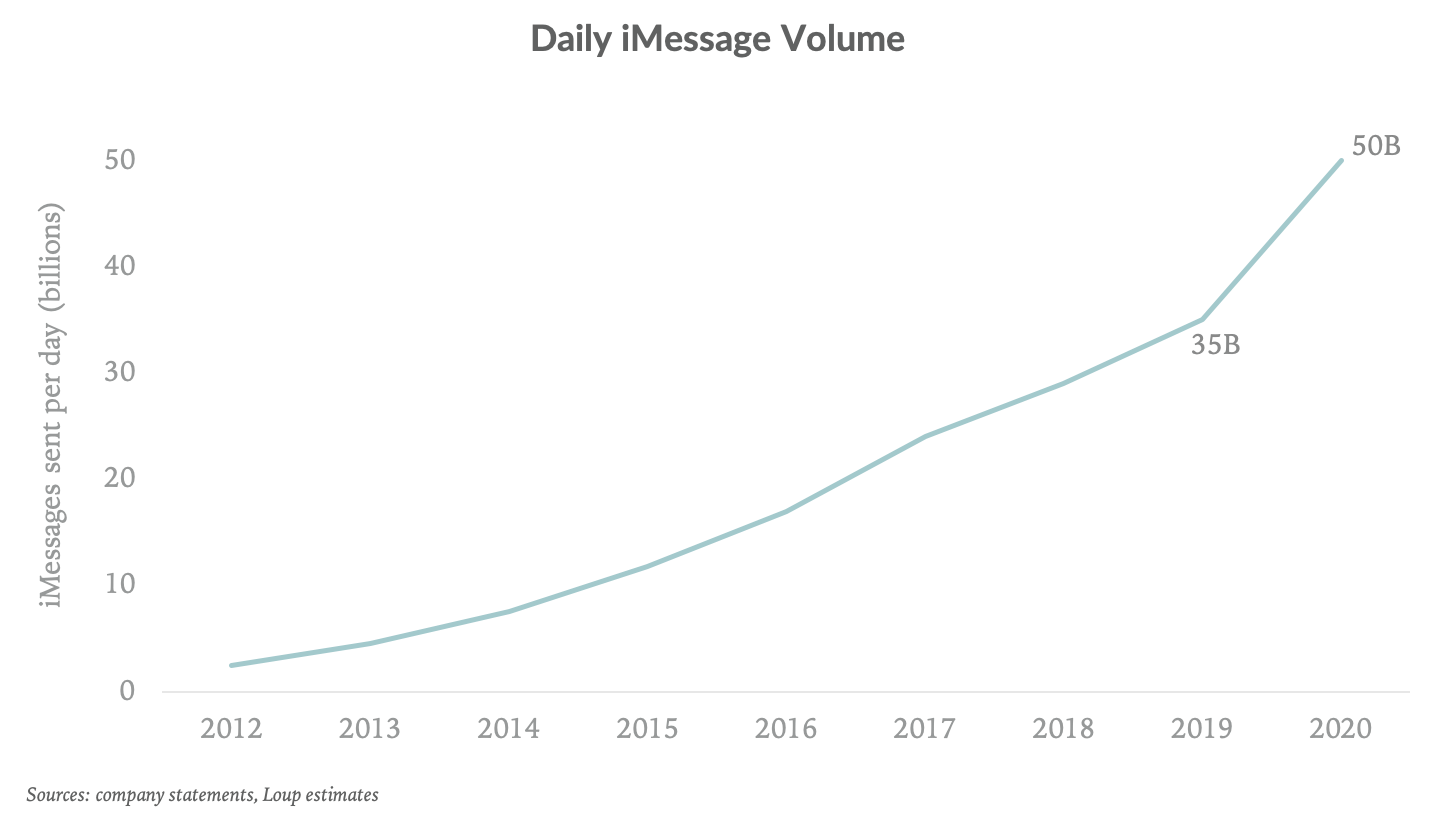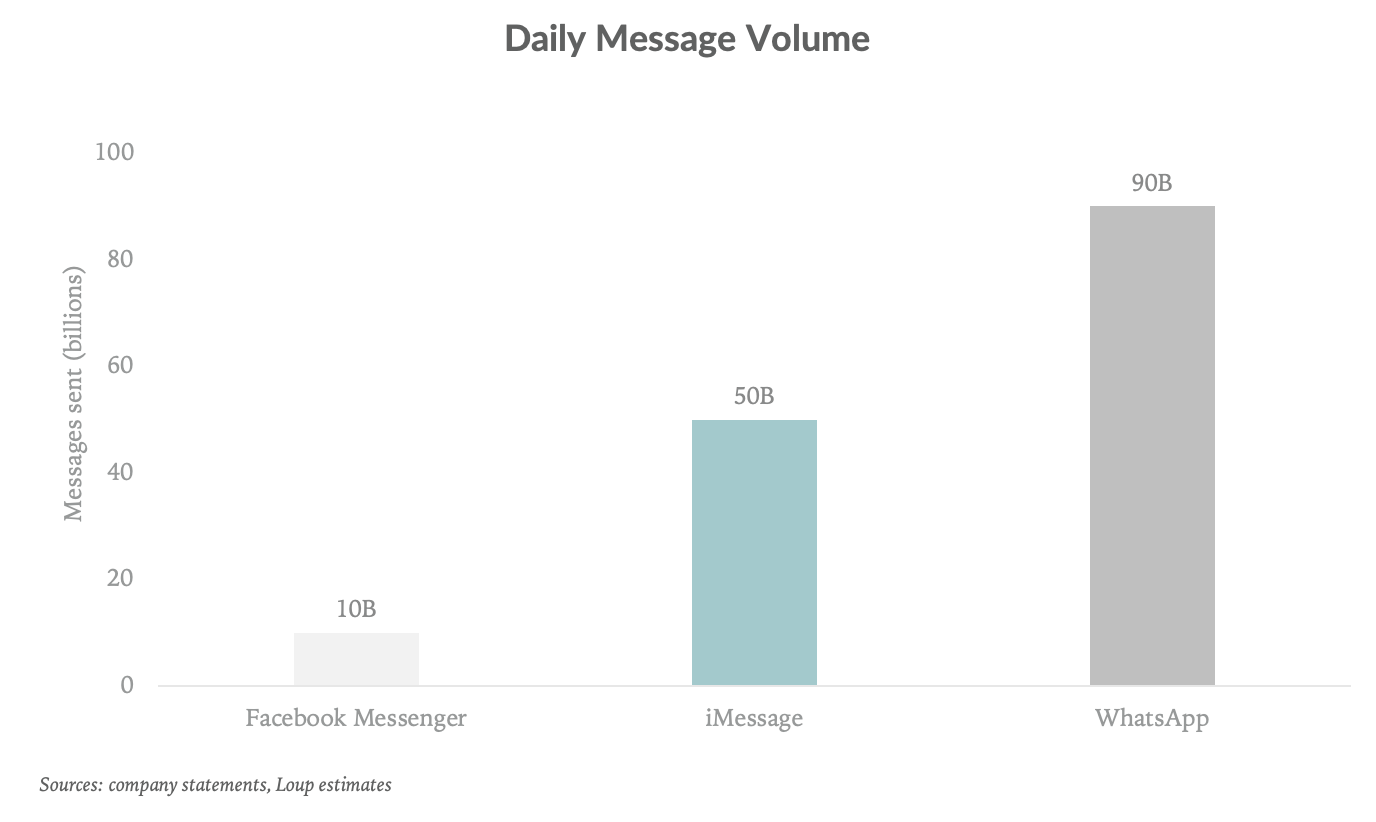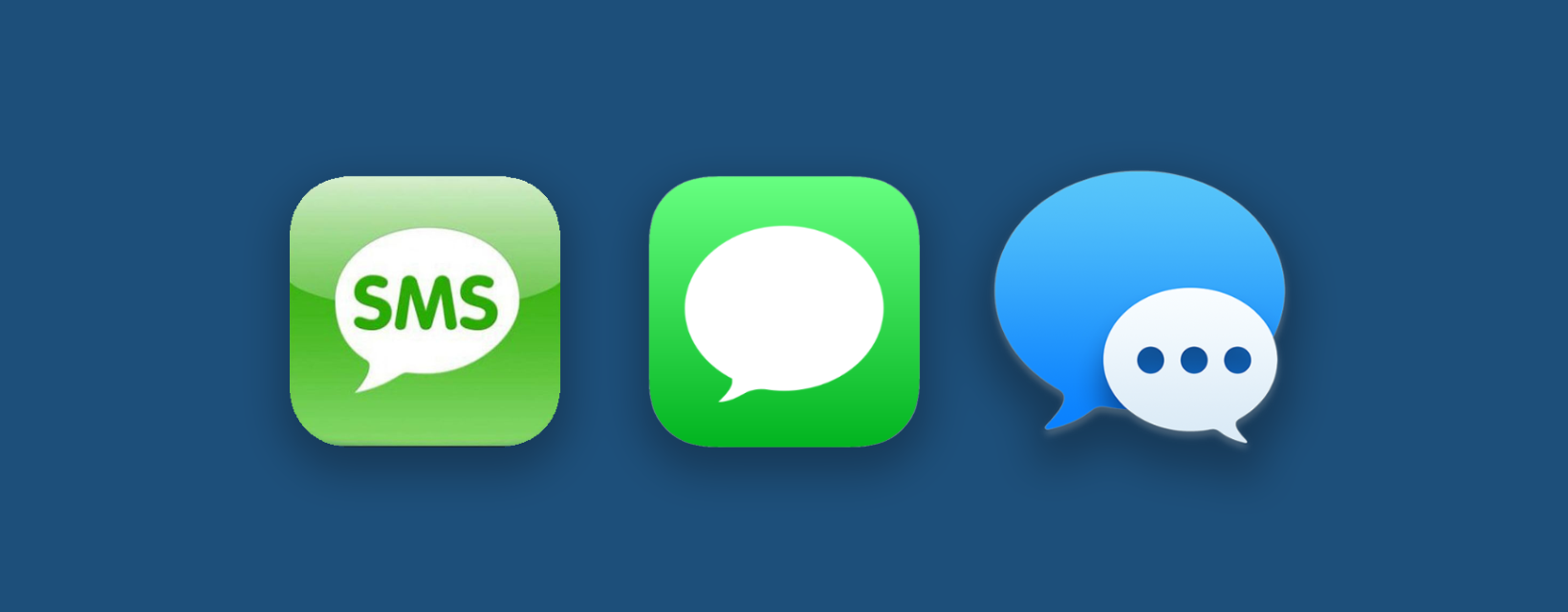The Messages app on iOS doesn’t get the credit it deserves. We’ve seen two opposing views of the platform: one side is negative, viewing messaging as a commodity, the other side is positive, viewing iOS’s “blue bubble” (iMessages) as an effective tool in motivating Android users to switch to iPhone.
That two-sided view is limited, given the platform is quickly evolving into the primary way iPhone and Mac users communicate, socialize, work, and pay. Messages has become WhatsApp, Slack, and Venmo rolled into one. At its core, Messages has become part of the fabric of our lives, and is one of several reasons why the trend of “once an iPhone customer, always an iPhone customer” will likely continue.
An expanding platform — Messages as:
While the value of Messages goes beyond the number of daily messages delivered, it’s an important starting point. We estimate that today about 50B iMessages are delivered daily, up 42% from a year ago.

This compares to WhatsApp at about 90B per day (growing at about 20%) and Facebook Messenger at 10B per day.

While Messages lags WhatsApp in daily messages sent by 40B, we believe the engagement on Messages is higher. We estimate an average iPhone user sends about 50 iMessages a day, compared to an average of 35-45 messages per day on WhatsApp. This estimate is based on our belief that there are 3.8B smartphones in use globally, of which about 1B are iPhones. This means iPhone accounts for about 26% of phones in use, slightly above its 18% share of new phones sold annually.
Slack
Work from home has shifted tech responsibility from the employer to the employee, prompting a new use case for Messages: workflow. We’ve observed Messages having a similar use case as Slack for managing work-related communications and project workflows. The numbers support this observation, with Apple highlighting a 40% increase in messages delivered in the month of May, along with a 2x increase in messages sent to groups.
Venmo
In 2017, Apple introduced Apple Pay Cash (now called Apple Cash), giving users the ability to send and receive money from friends through the Messages app. While we don’t have Messages peer-to-peer payment metrics, we’ve estimated about a 1/3 of iPhone owners have activated the feature. Furthermore, we’ve observed people who were previously dedicated to Venmo now using both Venmo and Apple Cash to send money. We estimate Venmo is growing payment volume by about 50% (to about $37B in the June 2020 quarter), and Apple is growing its P2P payment volume at a faster pace off a smaller base.
The evolution of Messages
Since 2011, when iOS 5 introduced support for iMessages, the Messages app has matured into a more comprehensive communication medium, helping propel a paradigm shift in what we expect from messaging platforms. Below is a timeline showing the evolution of Messages:

Sticky Features
While the original Messages app was a no-frills platform, it offered subtle features that helped drive user loyalty. For example, blue bubbles, delivery confirmations, and read receipts gave users certainty that messages were being sent successfully. In contrast, this made users feel as if traditional SMS was inferior. Additionally, because an iMessage was sent via the internet instead of cellular networks, images could be sent more reliably and faster than SMS or MMS. This was the first building block in making Messages more expressive, more interactive, and stickier.
Interoperability
Apple expanded the platform’s interoperability in 2012, allowing iMessages to be received on an iPad or Mac through a user’s phone number instead of just an Apple ID.
Social and Efficiency
While group messages existed from the beginning, in 2014, users could now name a group chain, add and remove participants, and mute notifications. This was a material step in making the platform more social, as it gave users the ability to create flexible group messages between friends. From an efficiency standpoint, Apple enabled quick-replies to messages from a phone’s lock screen and enabled SMS to be received on a connected iPad or Mac.
Expression and Interaction
Emojis and text effects let users express their thoughts and emotions in a more creative, accurate, and concise way. We call this information compression. For example, users can send an iMessage that is accompanied by confetti to communicate excitement. Integration between the Messages platform and other Apple or third-party apps opened new avenues for what could be done in Messages. Users could now send money to friends, share music, photos, or their location without leaving the app. Rich links gave a preview of embedded web links within the message and allowed video playback directly from Messages. This improvement in the user interface increased interaction as users no longer had to exit a message to view content.
Personalization
The addition of Memojis in 2018 let users create customizable avatars to represent themselves and their contacts. This personalization helps give the impression that each user has a Messages “profile” making the platform more expressive and social.
Organization and Prioritization
With people spending more time communicating through their devices, Messages updates in iOS 14 focused on filtering and organizing this added inbound noise. New features allow users to pin certain conversations and contacts to the top of their Messages list. Apple has reinvented speed dial for messaging, simplifying our personal information feeds. Additionally, within group chains, users are now able to reply to a specific person by typing their name. Users can also reply to a specific comment in the chain using inline replies. With regard to these two features, Apple is playing catchup to WhatsApp. That said, by continuing to add desirable features, whether through innovation or mimicking, Messages will maintain user loyalty.
The bottom line
By continually offering richer self-expression tools and a better user interface, the Messages platform delivers compelling new use cases and represents a competitive advantage for Apple. While Android has many similar features, the reliability and experience vary depending on which version of Android the recipient has installed. And although using all of the self-expression tools in Messages does require a common iOS between correspondents, the iOS update percentages far outpace those of Android. For example, it’s estimated about 50% of Apple devices have installed the latest version of software, iOS 14, about a month after its release in mid-September. Android has stopped issuing update rates, although past estimates pegged Android 10 adoption, ten months after its release, at 16%.
